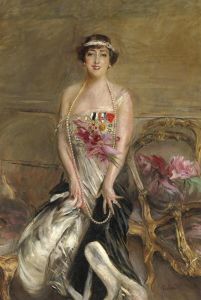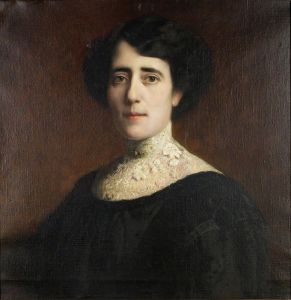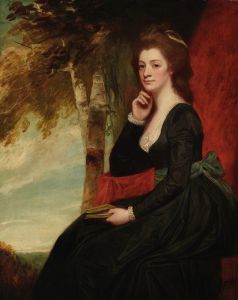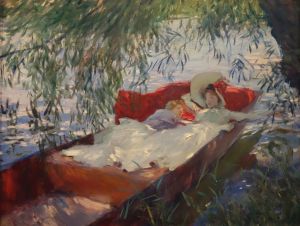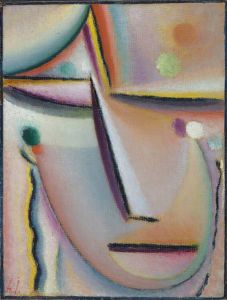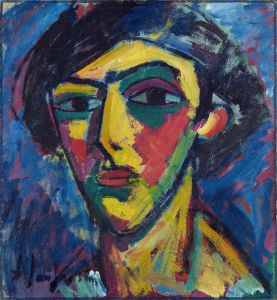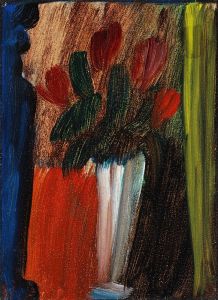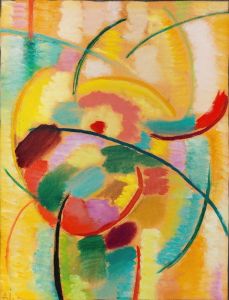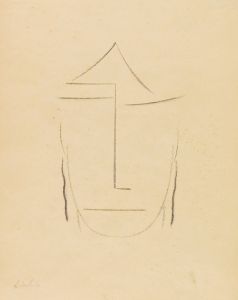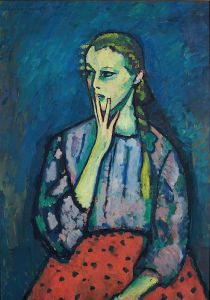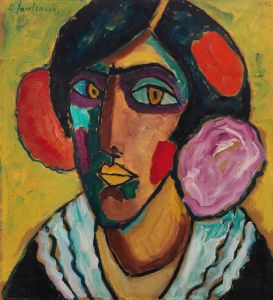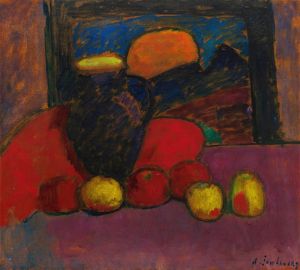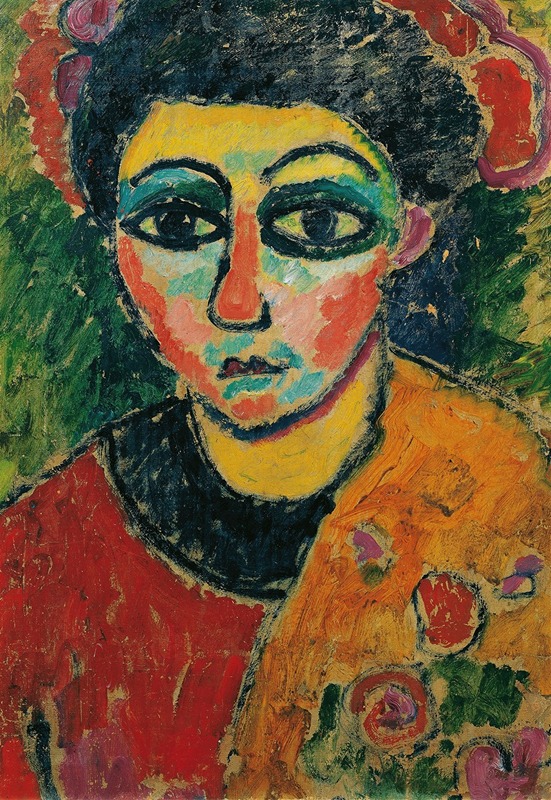
Portrait of a lady
A hand-painted replica of Alexej von Jawlensky’s masterpiece Portrait of a lady, meticulously crafted by professional artists to capture the true essence of the original. Each piece is created with museum-quality canvas and rare mineral pigments, carefully painted by experienced artists with delicate brushstrokes and rich, layered colors to perfectly recreate the texture of the original artwork. Unlike machine-printed reproductions, this hand-painted version brings the painting to life, infused with the artist’s emotions and skill in every stroke. Whether for personal collection or home decoration, it instantly elevates the artistic atmosphere of any space.
Alexej von Jawlensky was a Russian expressionist painter, known for his vibrant use of color and bold, emotive portraits. One of his notable works is "Portrait of a Lady," which exemplifies his distinctive style and artistic philosophy. Jawlensky was a key figure in the development of expressionism in the early 20th century, and his works often reflect his interest in conveying the inner emotions and spiritual essence of his subjects.
"Portrait of a Lady" is a striking example of Jawlensky's mature style, characterized by its use of vivid colors and simplified forms. The painting captures the essence of the subject through a combination of bold outlines and expressive brushwork. Jawlensky's approach to portraiture was heavily influenced by his belief in the spiritual power of art, and he sought to transcend mere physical likeness to capture the deeper emotional and spiritual dimensions of his subjects.
Jawlensky was associated with several important art movements and groups throughout his career. He was a member of the Munich-based group Der Blaue Reiter, which included other influential artists such as Wassily Kandinsky and Franz Marc. This group was instrumental in the development of expressionism and sought to explore new ways of expressing emotional and spiritual truths through art. Jawlensky's work during this period was marked by a move away from naturalistic representation towards a more abstract and expressive use of color and form.
In "Portrait of a Lady," Jawlensky employs a palette of rich, contrasting colors to create a sense of depth and intensity. The subject's face is rendered with broad, sweeping brushstrokes that convey a sense of movement and vitality. The background is often simplified, allowing the focus to remain on the subject's face and expression. This approach reflects Jawlensky's interest in the spiritual and emotional aspects of portraiture, as well as his desire to create a universal language of form and color.
Jawlensky's work was influenced by a variety of sources, including Russian icon painting, Fauvism, and the works of Vincent van Gogh and Paul Gauguin. These influences can be seen in his use of bold colors and his emphasis on the emotional and spiritual dimensions of his subjects. Despite the challenges he faced during his career, including the disruptions of World War I and the rise of the Nazi regime in Germany, Jawlensky continued to develop his unique artistic vision.
"Portrait of a Lady" is a testament to Jawlensky's skill as a portraitist and his commitment to exploring the deeper dimensions of human experience through art. The painting remains an important example of expressionist portraiture and continues to be celebrated for its emotional depth and vibrant use of color. Through works like this, Jawlensky has left a lasting legacy in the world of modern art, influencing generations of artists who followed in his footsteps.





